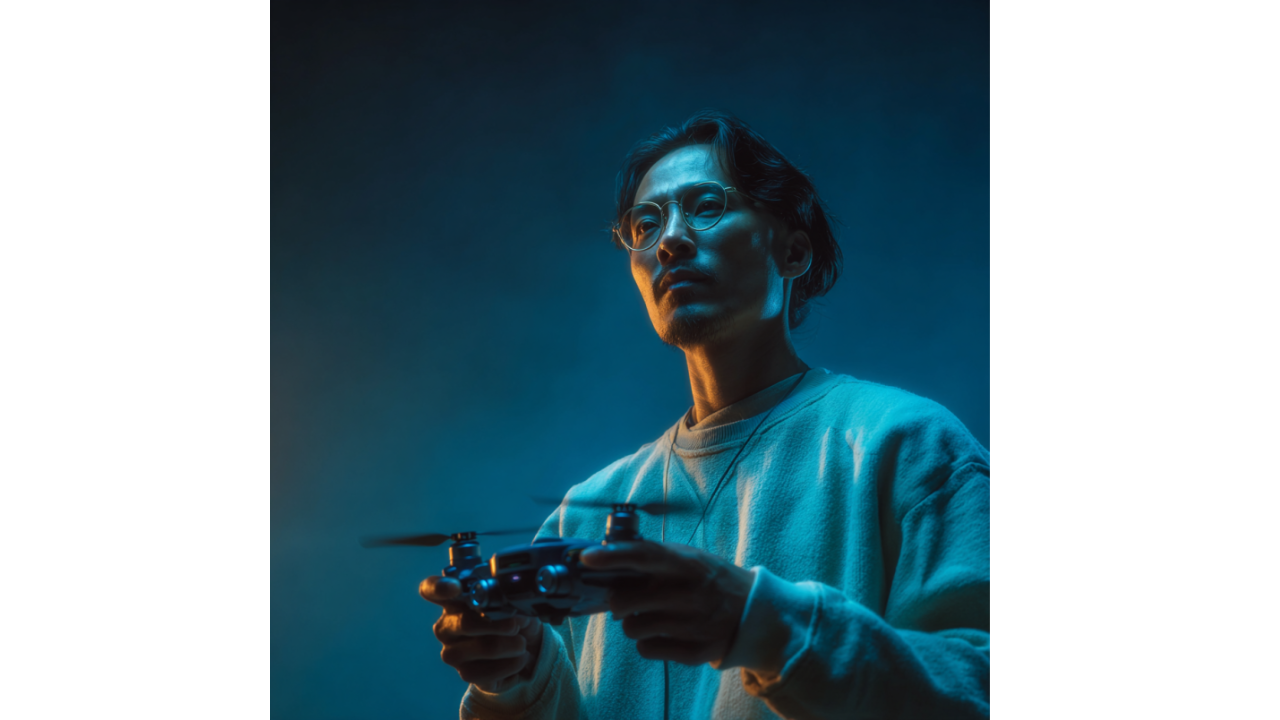HTC's VIVE Eagle Enters the AI Glasses Market
HTC just announced the VIVE Eagle, a 49-gram pair of AI-powered smart glasses that integrates OpenAI's GPT models, Google Gemini, and HTC's own VIVE...
3 min read
 Writing Team
:
Nov 20, 2025 8:00:01 AM
Writing Team
:
Nov 20, 2025 8:00:01 AM

While American universities publish papers, Tsinghua University files patents. Lots of them. More than Harvard, according to Bloomberg.
On the Tsinghua campus in Beijing, students play badminton near the east entrance while researchers in the Laboratory of Brain and Intelligence decode human cognition surrounded by whiteboards dense with equations and the smell of fresh paint. This is China's leading institution for science and technology, and it's not just training engineers—it's manufacturing intellectual property at industrial scale.
The patent count matters because it reveals a strategic divergence in how the U.S. and China approach AI development. American institutions prioritize academic publication: peer-reviewed papers, conference presentations, citation counts. Chinese institutions prioritize commercialization: patents, licensing deals, direct industry application. One system optimizes for knowledge sharing. The other optimizes for competitive advantage.
Harvard produces brilliant AI research. DeepMind's AlphaFold work drew on decades of protein-folding studies from institutions like MIT and Stanford. American universities are still the intellectual engine of global AI development. But intellectual engines don't win geopolitical competitions—deployed technology does.
Patents are legal weapons. They create moats around innovations, prevent competitors from using techniques, and generate licensing revenue that funds more research. When Tsinghua produces more AI patents than Harvard, it's not because their research is necessarily superior. It's because the institutional incentives are different.
Chinese universities operate with explicit national strategic objectives. AI isn't just an academic discipline—it's infrastructure for economic and military advantage. Tsinghua's research priorities are shaped by government policy in ways that would be controversial (and likely illegal) at U.S. institutions. The Laboratory of Brain and Intelligence isn't just exploring neuroscience out of curiosity. It's building capabilities that have direct applications in surveillance, social control, and military systems.
We need to be specific about what these patents represent. According to Bloomberg's reporting, Tsinghua is churning out AI-related intellectual property across computer vision, natural language processing, and neural network architectures. These aren't abstract theoretical contributions—they're techniques that can be implemented in products, licensed to companies, or withheld from competitors.
This matters because the AI industry increasingly runs on a small number of fundamental architectural innovations. Transformers, attention mechanisms, efficient training methods—whoever controls the patents on these techniques controls access. If China's academic institutions systematically patent AI innovations while Western institutions publish them openly, we're handing away strategic advantage in exchange for citation counts.
The counterargument is that open publication accelerates progress for everyone. That's true—if everyone plays by the same rules. But when one side patents aggressively while the other publishes openly, it creates asymmetric leverage. Chinese researchers can read American papers and file patents on applications of those ideas. American researchers can't easily access or build on Chinese patented techniques without licensing.
Tsinghua isn't just producing patents—it's producing the engineers who will implement them. China graduates more STEM PhDs annually than any other country. Many study abroad, including at U.S. institutions, then return with expertise and connections. This is smart strategy: leverage the world's best training infrastructure, then deploy that knowledge toward national objectives.
The U.S. has historically relied on immigration to maintain its AI talent advantage, recruiting the best researchers globally. But as geopolitical tensions escalate, that pipeline is constricting. Visa restrictions, national security concerns, and explicit targeting of Chinese researchers have made the U.S. a less attractive destination. Meanwhile, China is actively recruiting Chinese nationals working abroad to return with competitive salaries and research funding.
Tsinghua sits at the center of this talent ecosystem. It's Xi Jinping's alma mater—the school that trains Communist Party leadership and technical elites. When Bloomberg describes it as "Xi's school," that's not metaphorical. It's the institutional embodiment of China's state-directed approach to technological competition.
Every Western AI company operating in China faces the same dilemma: access to the world's second-largest market requires technology transfer, partnerships with local institutions, and compliance with regulations that mandate data sharing. When those partnerships involve universities like Tsinghua, intellectual property flows one direction.
This isn't theft in the traditional sense. It's structural. Chinese regulations require it. Western companies accept it because the market access is worth it—until suddenly it isn't, and they realize they've trained their competitors.
The patent imbalance exacerbates this. If Tsinghua holds more AI patents than Harvard, those patents can be weaponized against Western companies trying to operate in China. Licensing requirements, infringement claims, and strategic litigation all become tools for competitive advantage.
Not all AI research is created equal. The Laboratory of Brain and Intelligence isn't just studying cognition for academic purposes. Brain-computer interfaces, neural decoding, and cognitive modeling have direct applications in areas the U.S. would consider deeply problematic: thought surveillance, behavioral prediction, and psychological manipulation at scale.
China doesn't share Western squeamishness about these applications. If the research enables state objectives—social stability, party control, economic advantage—it gets funded and deployed. The ethical debates that slow Western research don't exist in the same form.
When Tsinghua produces more patents than Harvard, we should ask: patents for what, exactly? And who gets to use them, and how?
Need AI strategies that account for geopolitical competition—not just product features? Winsome Marketing's growth experts help you navigate technology adoption in an increasingly fragmented global market. Let's talk.

HTC just announced the VIVE Eagle, a 49-gram pair of AI-powered smart glasses that integrates OpenAI's GPT models, Google Gemini, and HTC's own VIVE...
-3.png)
1 min read
The irony is almost too perfect to bear. Just as artificial intelligence threatens to automate vast swaths of human expertise, the teaching...

We've entered the era of algorithmic academia, and Google just wrote the first check that matters. Their $1 billion commitment to AI education over...